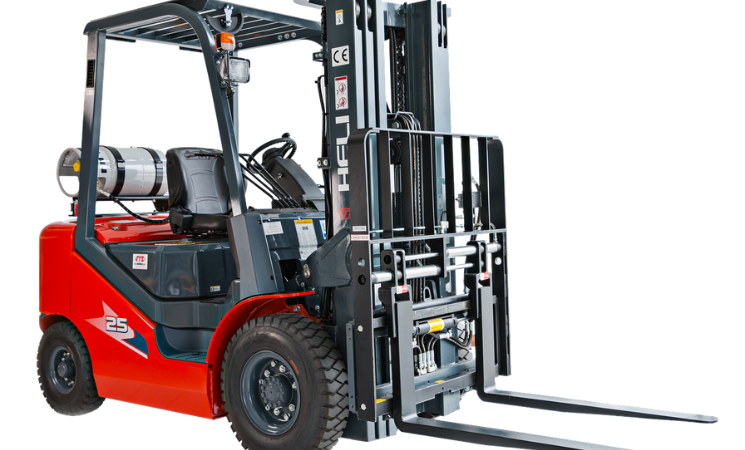In today’s high-speed industry, efficiency and adaptability are key to staying competitive. One area where these qualities can make a significant difference is within the domain of material handling. Here, the humble forklift is transformed into a multi-faceted workhorse through the integration of various forklift attachments. This article will delve into the realm of these indispensable tools, exploring how they bolster productivity and versatility in logistical operations.
The Significance of Forklift Attachments
Traditionally, forklifts have been employed for moving pallets and heavy loads within warehouses and storage facilities. However, the scope of forklift utility has expanded dramatically with the introduction of specialised attachments. These enhancements facilitate a multitude of tasks, ranging from the handling of unusual load shapes to the performance of additional functions not originally intended for forklifts.
Innovative Designs for Broad Applications
Modern forklift attachments come in various designs to address specific needs. For example, side shifters allow the operator to move the forks laterally, which greatly assists in precise placement of loads without the need to manoeuvre the entire vehicle. This not only saves time but also reduces the risk of product damage.
Addressing Storage and Space Constraints
Space constraints can be a significant issue in warehousing. By equipping a forklift with attachments such as fork extenders or rotating forks, operators can better utilise vertical space and streamline stacking procedures. This optimisation of storage can be a game-changer for facilities where floor space is at a premium.
Enhancing Material Handling Safety
Attachments also play a crucial role in maintaining safety standards in the workplace. By using the correct attachment for the task, operators reduce the need to perform risky manoeuvres, thereby minimising the potential for accidents. This investment in the right equipment can have far-reaching impacts on a company’s safety record and associated costs.
Optimising Load Handling Efficiency
Load handling efficiency is paramount, and certain attachments drastically cut load and unload times. Clamps, for instance, can be employed for various materials that are not conveniently palletised, such as bales, drums, or rolls. The adaptability provided by these clamps ensures swift transition between different types of loads without compromising on performance.
Influence on Operational Costs
While introducing forklift attachments may seem like an additional expense, the subsequent increase in operational efficiency can provide significant cost savings. A more versatile forklift fleet can reduce the need for specialised machinery, leading to a leaner, more cost-effective operation. When it comes to selecting these attachments, it is essential to consider the return on investment in terms of productivity, safety, and reduced equipment needs.
Choosing the Right Forklift Attachments
Investing in the right attachments necessitates a thorough assessment of one’s operational needs. It is important to match the attachment to the particular tasks that a business encounters most frequently. The selection process should also consider the types of loads handled and the working environment. Compatibility with existing forklift models is another crucial aspect of the decision-making process.
Partnership with Suppliers
Forming a strategic partnership with a reliable supplier of forklift attachments is invaluable. An experienced supplier can provide insights into the most effective tools for specific applications, ensuring that businesses make informed decisions. Expert suppliers typically offer comprehensive support, from purchase and installation to maintenance and training on usage.
Training and Certification
Enhancing a forklift’s capabilities with attachments will require additional training for operators. It is critical that personnel are adequately trained and certified in using new attachments, as proficiency can greatly influence efficiency and safety. Thus, businesses must prioritise operator education to fully reap the benefits of their investments in these tools.
Care and Maintenance
As with any machinery, forklift attachments require proper care and maintenance to continue functioning effectively. Regular inspections should be part of the maintenance schedule to ensure that all attachments are in good working order and that any safety issues are addressed immediately. Proper maintenance prolongs the life of the attachments and ensures that they continue to contribute positively to operational efficiency.
Future-Proofing Operations
Adapting to the evolving demands of industry means that businesses must be prepared to future-proof their operations. Investing in versatile forklift attachments is a step towards such preparedness. With the right tools, businesses can rapidly adjust to new material handling requirements and remain robust in the face of market changes and technological advancements.
Embracing Technological Integration
The integration of technology in material handling equipment continues to advance. Smart forklift attachments equipped with sensors and connected systems can provide data that informs about usage, efficiency, and maintenance needs. This technological shift promises to further refine the capabilities of forklift attachments, catapulting material handling into a new era of efficiency and productivity.
Conclusion
In conclusion, the implementation of forklift attachments represents a strategic move for any business aiming to enhance its material handling capabilities. From improving operational efficiency to bolstering safety and reducing costs, these tools can transform the standard forklift into a truly versatile performer. By aligning with adept suppliers, focusing on proper training, and investing in maintenance, businesses can ensure they are fully equipped to handle whatever challenges come their way now and in the future.










